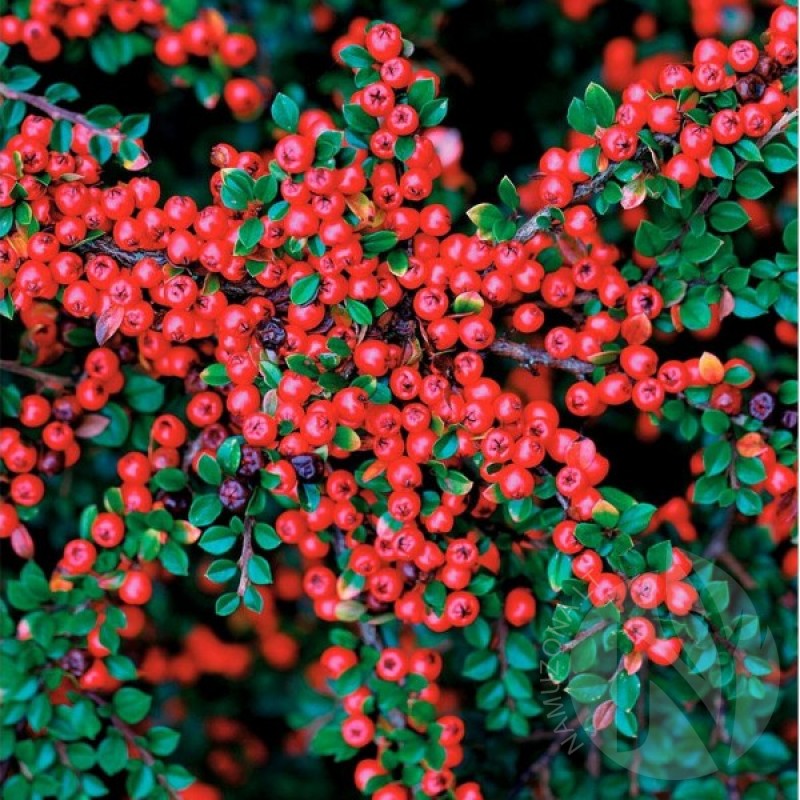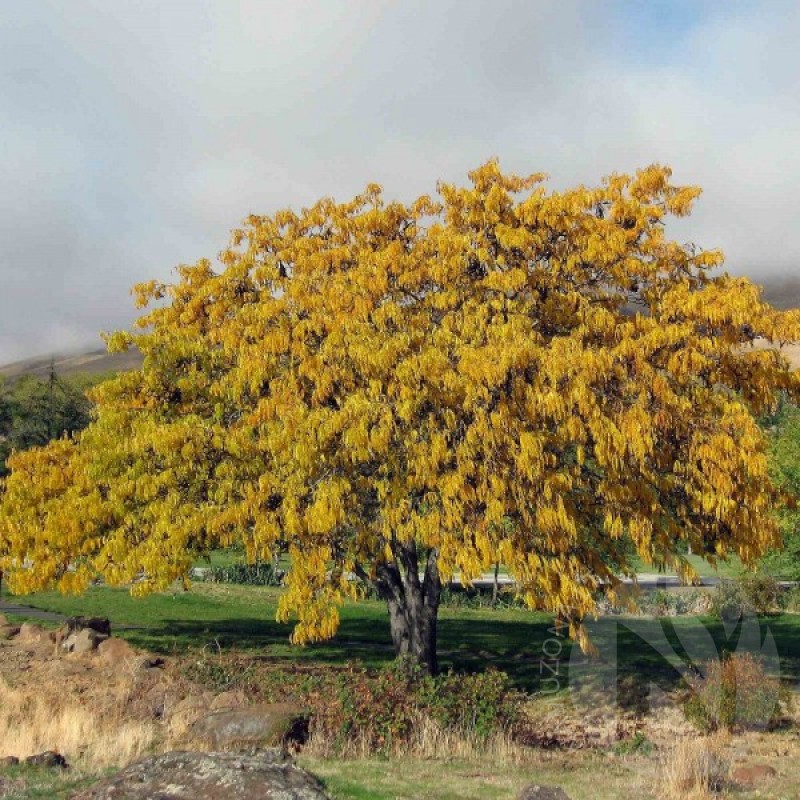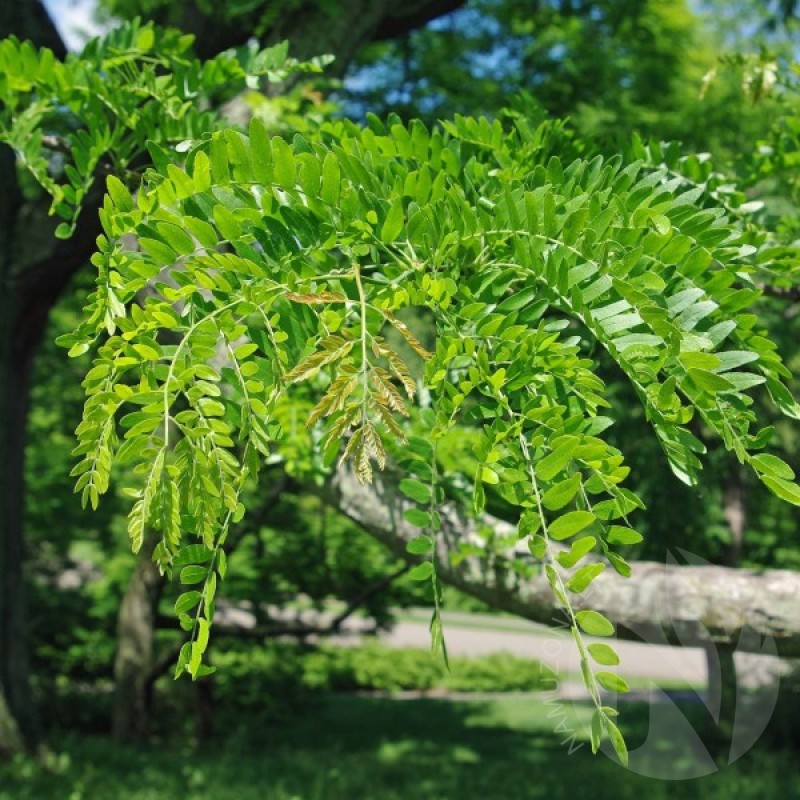
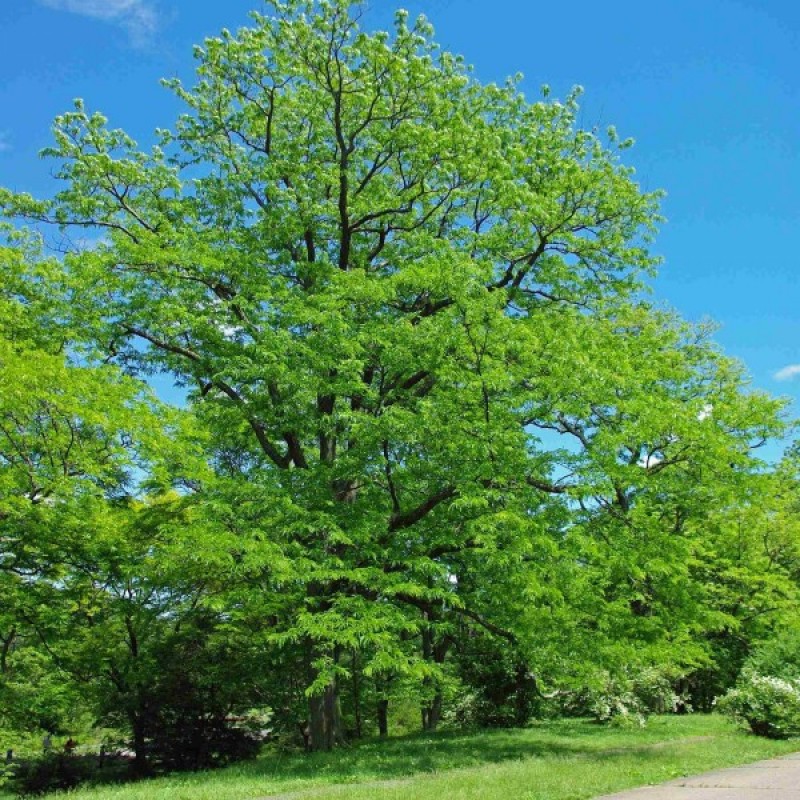
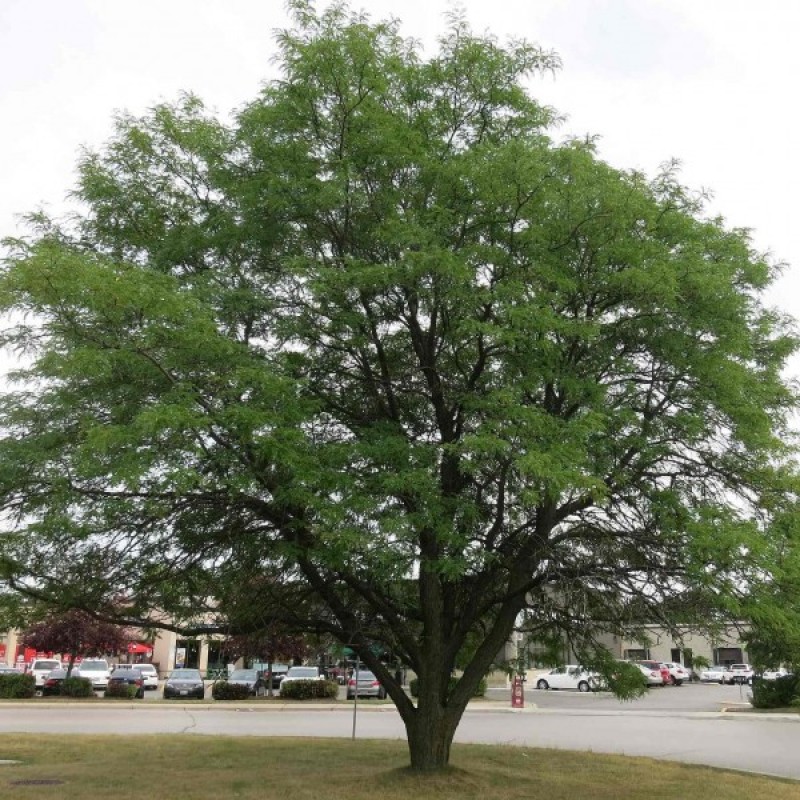
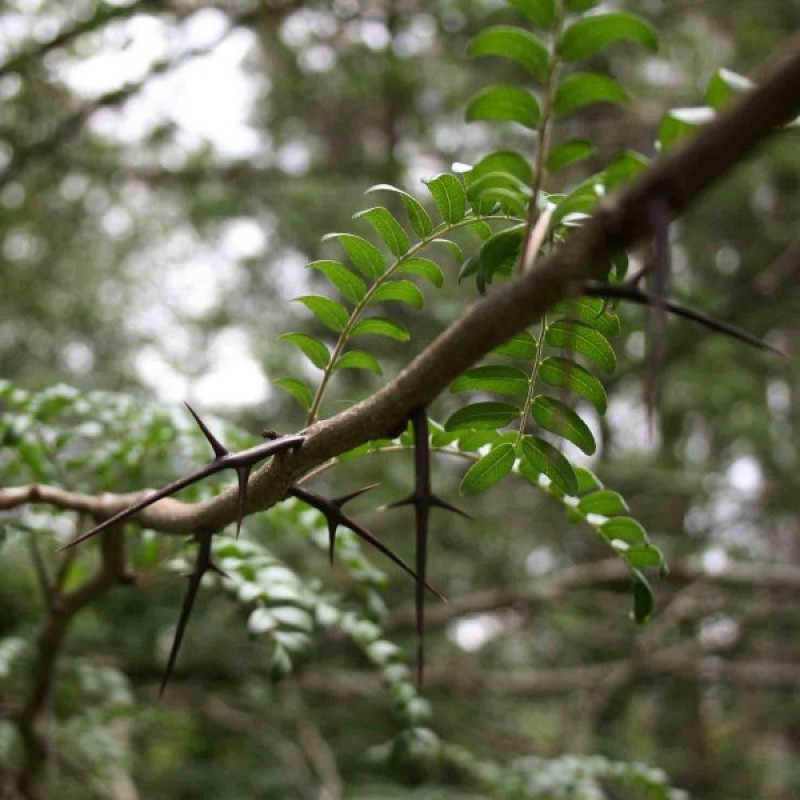

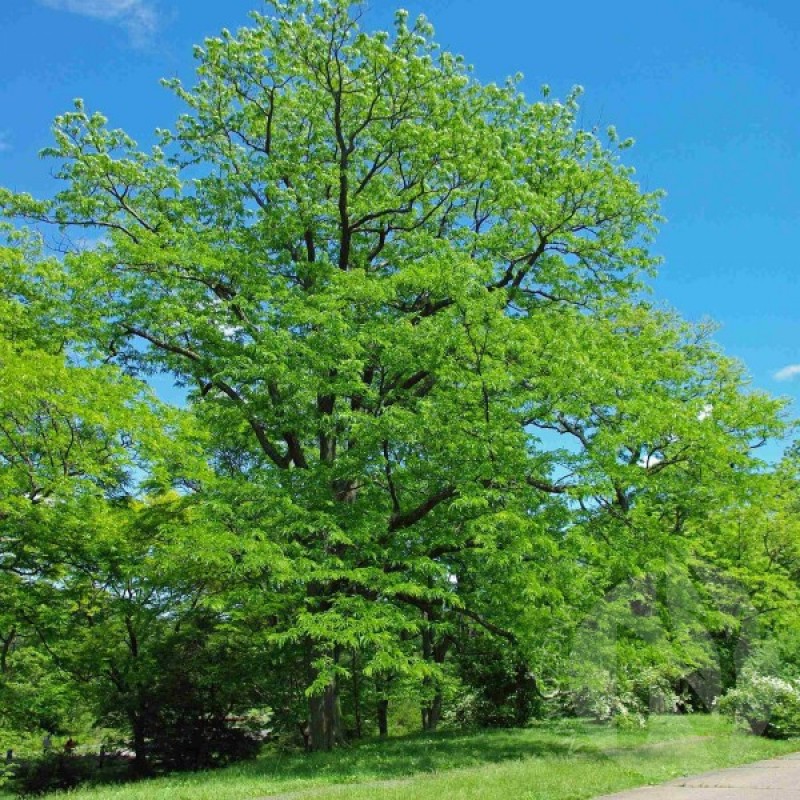
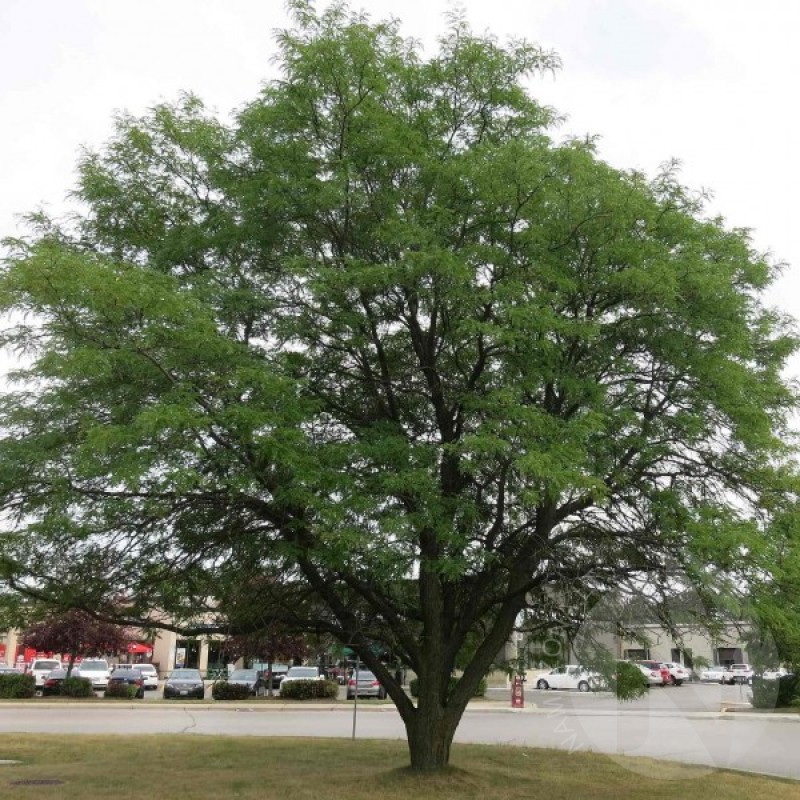
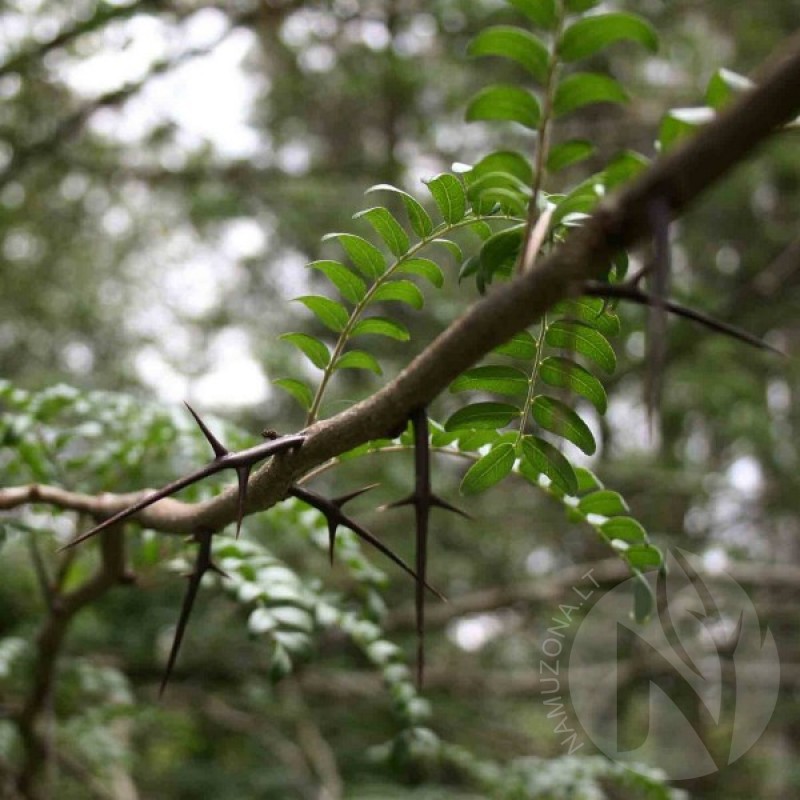
PAY ATTENTION!
All seeds (except SOLD OUT) are available for immediate shipping and will be dispatched within 1-2 business days.
INFORMATION NEEDED? PLEASE CONTACT US NOW!
The honey locust (Gleditsia triacanthos) also known as the thorny locust, is a deciduous tree in the Fabaceae family, native to central North America where it is mostly found in the moist soil of river valleys ranging from southeastern South Dakota to New Orleans and central Texas, and as far east as eastern Massachusetts.
Honey locusts, Gleditsia triacanthos, can reach a height of 20–30 m, with fast growth, and are relatively short-lived; their life spans are typically about 120 years, though some live up to 150 years. They are prone to losing large branches in windstorms. The leaves are pinnately compound on older trees but bipinnately compound on vigorous young trees. The leaflets are 1.5–2.5 cm and bright green. They turn yellow in the fall (autumn). Leafs out relatively late in spring, but generally slightly earlier than the black locust (Robinia pseudoacacia). The strongly scented cream-colored flowers appear in late spring, in clusters emerging from the base of the leaf axils.
The fruit of the honey locust is a flat legume (pod) that matures in early autumn. The pods are generally between 15–20 cm. The seeds are dispersed by grazing herbivores such as cattle and horses, which eat the pod pulp and excrete the seeds in droppings; the animal's digestive system assists in breaking down the hard seed coat, making germination easier. In addition, the seeds are released in the host's manure, providing fertilizer for them. Honey locust seed pods ripen in late spring and germinate rapidly when temperatures are warm enough.
Honey locusts commonly have thorns 3–10 cm long growing out of the branches, some reaching lengths over 20 cm; these may be single, or branched into several points, and commonly form dense clusters. The thorns are fairly soft and green when young, harden and turn red as they age, then fade to ash grey and turn brittle when mature. These thorns are thought to have evolved to protect the trees from browsing Pleistocene megafauna which may also have been involved in seed dispersal, but the size and spacing of them is useless in defending against smaller extant herbivores such as deer.
Information source: https://en.wikipedia.org/wiki/Honey_locust
Genus - Gleditsia
Species - Triacanthos
Common name - Thorny Honey Locust
Pre-Treatment - Not-required
Hardiness zones - 3 - 9
Height - 10 - 30 m
Spread - 3 - 10 m
Plant type - Tree
Vegetation type - Deciduous
Exposure - Full Sun
Growth rate - Fast
Soil PH - Acidic, Neutral, Alkaline
Soil type - Laom, well drained
Water requirements - Average, draught tolerant
Bloom season - May - June
Leaf / Flower color - Bright Green / Yellow - Green
GERMINATION INSTRUCTIONS
Sow time - February - June.
Seeds need to be scarified before the sowing. To do that, pour hot (not boiling!) water 70-80 degrees Celsius over them. Let soak for 12-24 hours.
Swollen seeds are ready to be sown immediately.
Another method is to physically breakthrough the seed coat by knicking the edge of the seed with a knife or sandpaper. Do it carefully! After that - soak the seeds in cold water for 12-24 hours. Only swollen seeds are ready to be sown.
If seeds remain not swollen, repeat the hot water treatment until it will.
After scarification sow in trays of good quality compost 1 cm deep.
Germination time - around 4 weeks at +15-+20C.
No questions about this product.

